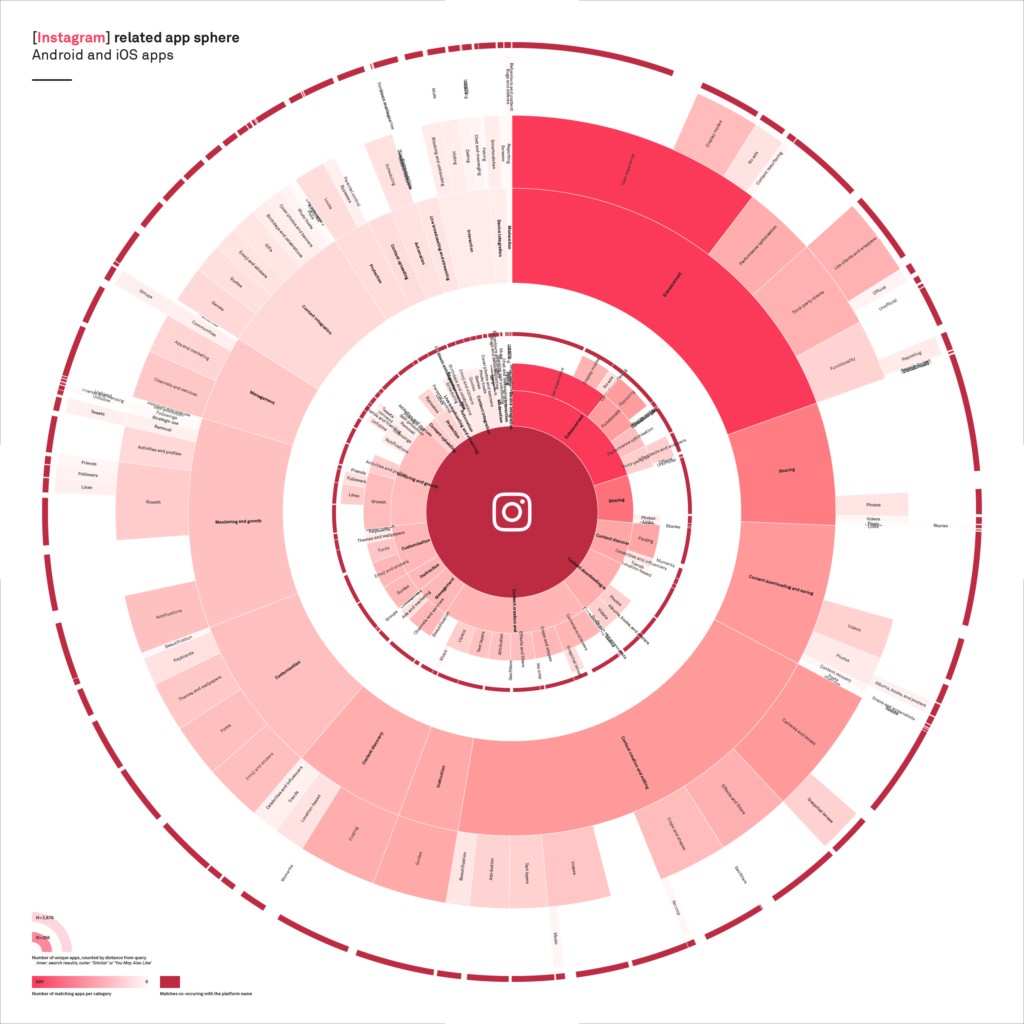We just published a new article (open access🔓): Carolin Gerlitz, Anne Helmond, Fernando van der Vlist, and Esther Weltevrede (alphabetical). “Regramming the Platform: Infrastructural Relations between Apps and Social Media.†Computational Culture 7 (2019). http://computationalculture.net/regramming-the-platform
Abstract
In this article, we empirically analyse the infrastructural relations between mobile apps and social media platforms and present a methodology to account for app–platform relations. Contrary to previous research on platforms and apps, we develop our approach from the perspective of apps based on a relational understanding of infrastructure. Our app-centric approach to platforms and infrastructure provides critical insights into (i) the kinds of third-party apps developed on the peripheries of social media platforms, (ii) the diverse practices and features supported and extended by those apps, and (iii) the messy and contingent nature of the relations between apps and social media platforms. Our approach provides insights into alternative forms of platform programmability beyond APIs and into social media-based ‘innovation’ app ecosystems driven by creative developer workarounds. Drawing on quantitative and qualitative forms of analysis of Android and iOS apps related to Facebook, Instagram, Snapchat, and Twitter, we explore how third-party apps engage with the specific ‘grammars of action’ of social media platforms and outline five distinct forms of regramming. With regramming, we refer to how app developers work with and around the affordances, action grammars, and constraints imposed by platforms for using their data and functionality. We conclude with conceptual and methodological reflections on the infrastructural relations between apps and social media platforms, app stores, and mobile platforms from the perspective of apps.
